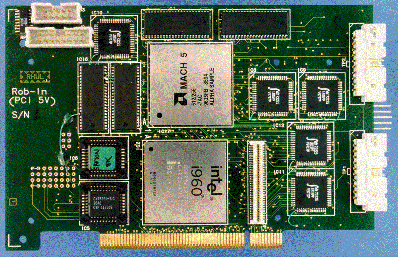

 Event-fragment
data will be received on an S-LINK LDC interface connection from the ROD
at an average rate of up to 100 MBytes/sec and written directly into "pages"
of buffer memory using addresses taken from the "free-page FIFO". There
will need to be some buffering between the S-LINK input and the buffer
memory since each is driven by a different clock, but a long FIFO is not
required. Indeed a simple "double-buffer" may suffice.
Event-fragment
data will be received on an S-LINK LDC interface connection from the ROD
at an average rate of up to 100 MBytes/sec and written directly into "pages"
of buffer memory using addresses taken from the "free-page FIFO". There
will need to be some buffering between the S-LINK input and the buffer
memory since each is driven by a different clock, but a long FIFO is not
required. Indeed a simple "double-buffer" may suffice.
Under certain circumstances an XOFF signal back to the ROD will be generated on the S-LINK interface in order to stem the flow of data. This will automatically occur whenever the number of entries in the free-page FIFO drops below a programmable threshold, or when the ROB-IN is powered up or reset.
At the end of each page, or at the end of each event-fragment, the last address used will be written to the "used-page FIFO" along with status bits indicating whether this is the first, intermediate, or last page of the event-fragment. The address logic will then read the next value in the free-page FIFO as a base for addressing the subsequent page.
Both the START and the END of each event-fragment will be signalled on the S-LINK input (for instance by bits in a "control" word flagged by the S-LINK control/data bit). The length of pages will be adjustable in the hardware logic. Neither this nor the buffer-memory size should be unduly constrained by address-widths.
CERN - High Speed Interconnect
- S-LINK
Erik van der Bij - 10 October
2000